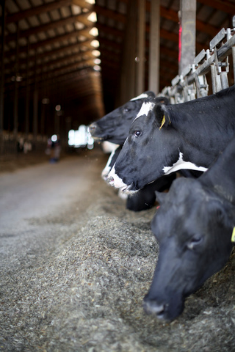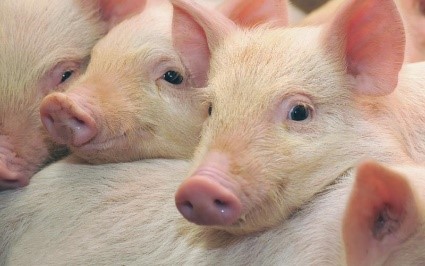Winter nutrition and management have many focal points, but there are a few management decisions all cattle producers should place on their “to-do” list. Most spring calving herds look at winter as a time to prepare cowherds for calving, early milk production and breeding seasons. Fall-calving cows are in full lactation and breeding in addition to maintaining body weight during times of environmental stress. In both production scenarios, bridging the gap between fall and green grass is a time to implement management and nutritional plans that will reduce costs, increase efficiency and create more profits.
Here are some steps you should consider taking:
1. Monitor body condition.
Body condition scores are an open book to the nutritional plane that cattle have been on; it is simple to learn how to evaluate body condition scores and can be done daily. Evaluation areas include the shape of the top and spine appearance, brisket, ribs and flanks. Thin cows have late breed-backs, lower-quality colostrum and lighter-weight calves. Fat cows have low fertility, greater calving difficulty, less milk production and lower efficiency. Cows do not all have to have the same body condition to be productive, but, in general, moderate body condition is an excellent indication that cattle have benefited from their environment and their management plans.
2. Don’t guess — forage test.
The value of forage testing cannot be overstated. Knowing a few basic facts about feedstuffs can help you make money in several different ways. Since water content is the most variable nutrient in the feed, it is important to know the moisture component of feed when formulating and mixing feed, since it can significantly influence the amount and proportion used in the feed formula. Nutritional profiles can be used to determine the value of the feed and assist in making diets that are both low-cost and best-performing. With the wide variety and availability of feedstuffs today, knowing their nutritional makeup can help you predict the difference between a good deal and a bad one. Don’t make the mistake of filling cows with feedstuffs that do not meet daily requirements; low- and no-performance cattle seldom make money. Hubbard Feeds dealers offer both feed tests and technical support to fully utilize the resulting information.
3. Pregnancy-check the cowherd.
Identifying open cows can help provide educated options. The open females can be culled from the herd, creating a reduction in feed costs — or they can be grouped and managed to increase their value as late-bred females or placed into a different calving group. Having this pregnancy information can allow you to evaluate and implement management options that could create profits.
4. Minimize feed waste.
Numerous trials have shown the value of feeding equipment that reduces waste while not limiting convenience. Losses of more than 20% can be the result of poor forage management and feed handling. Examples include the design of round bale hay feeders, covering silage piles, timely baling and raking to reduce field losses — the list goes on. The amount of feed delivered should also be considered. I once had an astute cattleman tell me, “Feed cows a day’s worth of hay and they will be eating in the dining room. Feed them two days’ worth of hay and they will be eating in the living room — but feed them three days’ worth of hay and they will be eating in the bathroom.”
5. Cold stress is costly; try to provide weather protection when possible.
For each degree the weather falls below a cow’s comfort temperature, TDN energy requirements increase 1%. Wind, moisture and lack of sunshine add to the insult of cold temperatures; when temperatures are near freezing, the wind is blowing at 10 to 15 miles per hour and rain has soaked cattle to the bone, the energy requirements increase by over 30%. There are only two ways to meet those additional requirements: cattle either need to eat more pounds of feed and/or they must consume a diet with greater energy density.
6. Control both internal and external parasites.
Parasites are free-loaders that rob profit from cattle. Lice are a major external parasite that should be controlled immediately as well as through the winter months. Scratching and hair loss are sure signs of lice infestation. Internal parasites decrease digestion and gut health. A variety of products and application methods give producers choices that are effective. The lost income to parasite infestation is estimated to be in the millions of dollars annually. The timely application of parasite control management decisions should be a priority in every management plan.
Cattle operations may have individual identities and needs, but there are some common management decisions that can increase profits. Collecting and analyzing information on a cowherd can help refine management decisions. Eliminating problems also eliminates profit robbers. Properly adjusting to the environmental conditions improves cowherd performance and prioritizes resources to improve efficiency. Managing cowherds for optimal performance and maximum profit are important wintertime management practices and decisions.
Download a free poster!
























